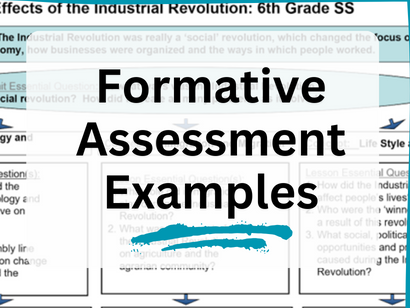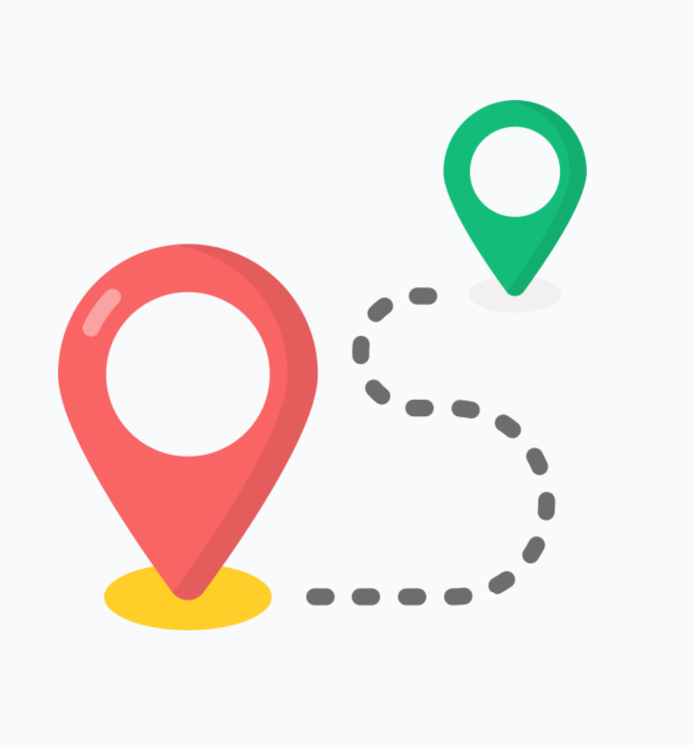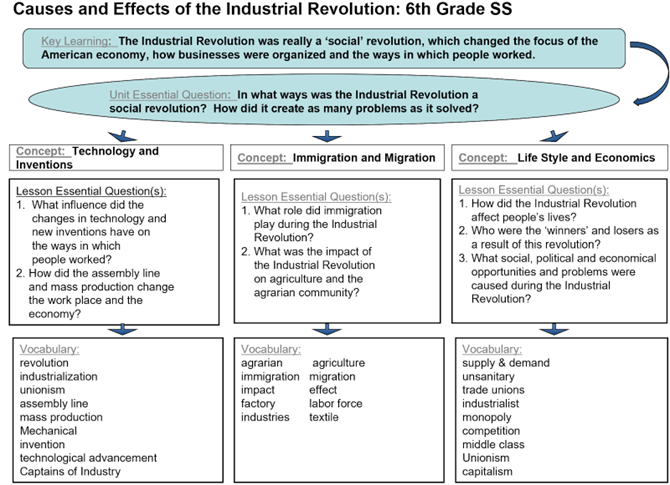Formative Assessment Examples: A Guide Into Peer Feedback and Student Self-Assessment Strategies
October 20, 2023 December 1, 2023
The Challenge of Giving Consistent Student Feedback
Learning without monitoring is like driving without a destination; you may never arrive anywhere.
Anyone who has ever tried to learn something new knows the value of monitoring, both personally and by an instructor. Without this reciprocal responsibility, it’s possible to never “arrive” at our intended destination, such as a skilled performance or deeper understanding of a concept.
Anyone who has ever tried to learn something new knows the value of monitoring, both personally and by an instructor. Without this reciprocal responsibility, it’s possible to never “arrive” at our intended destination, such as a skilled performance or deeper understanding of a concept.

Applying this idea to the classroom, teachers are very aware of the need to monitor daily. However, it can be difficult to give feedback just as consistently. When feedback is provided, students may be disconnected from it, as they may be unsure of how to use it for improvement. This may be because of a struggle to connect it to what they have been learning over the course of the lesson or from a lack of confidence in how to use the feedback to advance their learning. Their hesitancy could be from a lack of ownership in the feedback process or development.
The Foundation of Effective Formative Assessments
This idea of students engaged in self-monitoring with feedback, both received and given, is the foundation of effective formative assessments. Without greater attention toward developing students’ abilities to self-assess and then use feedback to improve, teachers’ use of formative assessments will likely not reach its greatest impact on learning.
The Road Less Traveled: Student Self-Assessment
The original research based on formative assessment is most typically traced back to the 1998 publication Assessment and Classroom Learning (Black & Wiliam, 1998). The researchers framed effective formative assessment in their work as “building students’ skills for learning to learn.” They defined this as:
- Placing emphasis on the teaching and learning process and actively involving students in that process.
- Building students’ skills for peer- and self-assessment.
- Helping students understand their own learning and develop appropriate strategies for learning to learn.
These ideas are well-established today, but implementing them consistently and pervasively is still a struggle. This is evidenced in a study from REL West that explored the use of formative assessments as a means to prompt students to take a more active role in their learning by encouraging them to take “corrective action” if they notice a discrepancy between where they are in understanding a lesson and where they need to be (2020).
The study reported that of the 24,000 students surveyed, 60 percent of the responding students relied on “tracking their own progress” as their primary self-regulating learning strategy. The other 40 percent reported not using any self-regulated learning strategies “always” in a normal week. The study also found that there was only a small positive association between the frequency of teachers’ formative assessment practices and the average number of self-regulated learning strategies their students used.
This means that even though teachers are formatively assessing their students, many students are merely tracking their progress and not doing more to improve their understanding, while a significant number are completely uninvolved throughout the process.

The Benefit of Facilitating Student Peer Feedback and Self-Assessment
If giving formative assessments is not enough to move students toward more proactive involvement, then what can educators do to create the needed change in teaching and learning? The answer may come from one other important finding in the study – that “some of the teachers’ least frequently used formative assessment practices – facilitating student peer feedback and self-assessment – had stronger positive associations with the average number of student self-regulated learning strategies.” In other words, formative assessments that leveraged student-peer feedback had a greater impact on students’ willingness to use additional self-regulated learning strategies.
A New Road: Formative Assessment Examples Using Student-Peer Feedback
Like all High-Yield Instructional Strategies, formative assessments and feedback work better together!
However, they are the most impactful when they connect to learning goals. Intentionally connecting these strategies is one of the most effective ways to improve student learning outcomes in lessons and units. Here are 3 formative assessment examples:
- Connect to What Students Already Know
To continue with the driving metaphor, we all know that before you can go anywhere, you must first know where you are starting. This starts with ensuring students understand a lesson’s learning goals and expectations and communicating the goal’s purpose and relevance. Students must then self-assess their understanding by connecting to their prior knowledge or by making a real-world connection, both of which can help them contextualize and formulate patterns between new learning and what they already know. There are many different ways students can self-assess at the start of a lesson, but connecting these types of formative pre-assessments with other High Yield Instructional Strategies, like Writing to Learn, Vocabulary Instruction, and Collaborative Pairs, produces a multiplier effect on learning, making them all the more impactful on students’ self-assessment. Strategy examples:
- Draw a large thought bubble above a stick figure’s head and write everything they already know about a goal. Partners exchange papers and write a summary, including one new idea their partner may want or need to know.
- List at least 3 things they know for sure about a topic and then Give One, Get One with other students to add or edit their list.
- Use a certain number of vocabulary words related to the goal to do a Quick Write and then explain their writing to a partner. Partners should paraphrase what they heard so students can reflect on the clarity of the ideas.
These strategies not only help students connect to their prior knowledge but also help develop student-to-teacher communication, letting students show the teacher where their understanding is deep, shallow, or stalled.
- Use Advance Organizers to Guide Learning
Advance Organizers are verbal and visual organizers for communicating a lesson’s learning goals and vocabulary to students. Referring to these organizers throughout instruction will allow students to connect new learning to the organizer, helping it to stick like “mental Velcro.” Advance Organizers should be created and used at both the lesson and unit levels as formative assessments and support for students in setting goals, tracking progress, and asking questions. Strategies and examples include:
- Lesson Essential Questions (lesson level): Every student knows a question needs an answer! By communicating learning goals as a question, students will have the opportunity to formulate their own answers. It may also spark additional questions as students think about what they are learning and its connection to the Lesson Essential Question. Learn more about how Lesson Essential Questions are used in the classroom as formative assessment.
- Student Learning Maps (unit level): Student Learning Maps can be used to introduce students to the “big picture” of what they will be learning during a unit. It is created by graphically categorizing the Lesson Essential Questions and key vocabulary from a unit and illustrating how the questions connect across the unit. Students can use these maps to evaluate their learning by answering the Unit Essential Question and the Lesson Essential Questions or by forming connections with prior knowledge throughout the unit through vocabulary development. If students struggle to answer a particular Lesson Essential Question, its position in the map may help them to determine why they are confused or provide insights on how to solicit feedback from their teacher.

- Use Success Criteria and Rubrics to Clarify Expectations
In Finding the Value in Evaluation: Self-Evaluation in a Middle School Classroom, Linda Rief talks about the importance of self-assessment during instruction: “When students are collaborators in assessment, they develop the habit of self-reflection. They learn the qualities of good work, how to judge their work against these qualities, how to step back from their work to assess their own efforts and feelings of accomplishment, and how to set personal goals.” This type of self-assessment requires students to build on their initial understanding of the lesson’s learning goals by co-constructing the success criteria for the lesson assessment. The term co-constructing does not necessarily mean students are helping to create the assessment, but rather, they are working with the teacher to co-create an understanding of the assessment expectations. While studying the criteria together, teachers can better understand what skills students already feel confident about and where they may need more help. These insights can guide instruction for the unit. Students can, of course, be more directly involved in constructing the assessment by either adding to it or helping to develop it from scratch.
Regardless of the degree of student participation, co-construction of any kind will improve students’ ability to peer- and self-assess, as it will give them a clearer understanding of the criteria and the vocabulary to describe it. This is especially likely when rubrics are used along with the criteria. A rubric can help students better understand the assessment’s quality levels and how it will be scored. As students discuss the rubrics and use them for self-assessment, they also have an opportunity to use it to guide peer feedback, helping them formatively assess their partner’s work and find ways to improve. Below is a quick video example of how students can use rubrics to facilitate peer feedback and improve learning outcomes.
Navigating Students Forward: How to Get Started
Feedback must not only be given to students but also by students if formative assessment is to make its greatest impact on learning. It is this reciprocity that matters most for student learning. As you consider how to help students navigate toward new learning, challenge yourself to emphasize supporting students’ self-assessment and using feedback to develop their greater involvement in the learning process. As is often the case when learning something new, keep your attention on helping students start, even if starting small, and be as explicit as possible to mark the road intended for them to take clearly. Work with your colleagues to address the questions and action steps outlined below to help you shift how you use formative assessment and feedback collaboratively across your school.
____________________________________________________________________
Questions for Reflection:
- What ideas from this article do you think are most important to put into practice and why?
- How can Lesson Essential Questions or Student Learning Maps be used with students in your classroom or school?
Actions to Consider:
- Examine a plan for an upcoming lesson. What types of opportunities are you providing for students to give feedback to peers? What could you change or add?
- Develop a rubric for a common assessment. Collaborate with your grade-level or content area team to plan how to use the rubric with students to facilitate discussion and feedback about learning.
Leading the Learning:
- Initiate Professional Learning Community (PLC) discussions centered on establishing classroom environments conducive to eliciting feedback from students regarding formative assessments.
- During classroom visits, observe how each classroom environment encourages students to give and receive feedback. Identify any recurring patterns and engage in conversations with individual educators and teams to share insights and ideas.
Take Action Today:
To begin implementing the strategies outlined in the article and further explore the planning and utilization of formative assessments and feedback in your classroom, reach out to us for information about our online course: “Strategies in Action: Formative Assessment, Feedback, and Remediation.”
Resources
Jaquet, R. M. and K. (2020, November 24). The association between teachers’ use of formative assessment practices and students’ use of self-regulated learning strategies. National Center for Education Statistics (NCES) Home Page, a part of the U.S. Department of Education. https://nces.ed.gov/pubsearch/pubsinfo.asp?pubid=REL2021041
Want to Increase Student Achievement and Accelerate Learning?
We’d love to partner with your school – reach out to us today to learn about PD, courses, and trainings. You can also check out our school achievement and instructional framework case studies.
